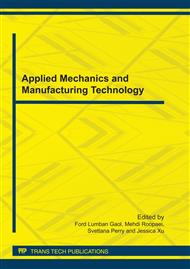[1]
Buehler WI, Gilfrick JV, Wiley RC. Effect of low-temperature phase changes on the mechanical properties of alloy near composition NiTi. J Appl Physiol. 1963; 34: 1475-7.
Google Scholar
[2]
Civjan S, Huget EF, DeSimon LB. Potential applications of certain nickel-titanium (Nitinol) alloys. J Dent Res. 1975; 54: 89-96.
DOI: 10.1177/00220345750540014301
Google Scholar
[3]
Andresen GF, Bigelow, Andrew JG. 55 Nitinol wire: Force developed as a function of elastic memory,. Aust Dent J. 1979; 2 4: 146-49.
Google Scholar
[4]
ASM International, Metals Handbook, volume 2. Properties and Selection: Nonferrous Alloys and Special-Purpose Materials. 10th ed. USA; 1990. pp.898-902.
DOI: 10.31399/asm.hb.v02.9781627081627
Google Scholar
[5]
Otsuka K, Wayman. Shape memory materials. United Kingdom: Cambridge University Press; 1998. pp.49-148.
Google Scholar
[6]
Andresen GF, Morrow RE. Laboratory and clinical analyses of nitinol wire. Am J Orthod. 1978; 73: 142-51.
Google Scholar
[7]
Meling TR, Odegarrd J. The effect of short-term temperature changes on superelastic nickel-titanium archwires activated in orthodontic bending. Am J Orthod Dentofac Orthop. 2001; 119(3): 263-73.
DOI: 10.1067/mod.2001.112451
Google Scholar
[8]
Hurst CL, Duncanson MG, Nanda RS, Nagolkar PV. An evaluation of the shape-memory phenomenon of nickel-titanium orthodontic wires. Am J Orthod Dentofac Orthod. 1990; 98: 72-6.
DOI: 10.1016/0889-5406(90)70034-a
Google Scholar
[9]
Water NE. Orthodontic products update: Superelastic nickel-titanium wires. Br J Orthod. 1992; 19: 319-22.
Google Scholar
[10]
Brantly WA, Eliades T. Orthodontic material: scientific and clinical aspects: Thieme, New York; 2001. pp.79-103.
Google Scholar
[11]
Bradley TG, Brantley WA, Culbertson BM. Differential scanning calorimetry (DSC) analyses of superelastic and nonsuperelastic nickel-titanium orthodontic wires. Am J Orthod Dentofac Orthop 1996; 109: 589-597.
DOI: 10.1016/s0889-5406(96)70070-7
Google Scholar
[12]
Kusy RP, Steven LE. Triple-stranded stainless steel wires-evaluation of mechanical properties and comparison with titanium alloy alternatives. Angle Orthod. 1987; 57: 18-32.
Google Scholar
[13]
Brantly WA. Orthodontic wires. In: Dental materials: properties and selection: Quintessence Publishing; 1989. pp.381-98.
Google Scholar
[14]
Lyman T. Metal Handbook. 8th ed. Cleveland: American Society for Metals; (1964).
Google Scholar
[15]
Otsuka K, Wayman. Shape memory materials. United Kingdom: Cambridge University Press; 1998. pp.49-148.
Google Scholar
[16]
Tonner RIM, Waters NE. The characteristics of super-elastic NiTi wires in three-point bending. Part II: Intra-batch variation. Eur J Orthod. 1994; 16: 421-5.
DOI: 10.1093/ejo/16.5.421
Google Scholar
[17]
Fariabi S, Thoma PE, Abujudom DN. The effect of cold work and heat treatment on the phase transformations of near equiatomic NiTi shape memory alloy. Proc ICOMAT-(1989).
DOI: 10.4028/www.scientific.net/msf.56-58.565
Google Scholar
[18]
Todoroki T, Tamura H. effect of heat treatment after cold working on the phase transformation in TiNi alloy. Trans Jpn Inst Metals. 1987; 28: 83-94.
DOI: 10.2320/matertrans1960.28.83
Google Scholar
[19]
Melton KN, Mercier O. the mechanical properties of NiTi-based shape memory alloys. Acta Met. 1981; 29: 393-8.
DOI: 10.1016/0001-6160(81)90165-6
Google Scholar


